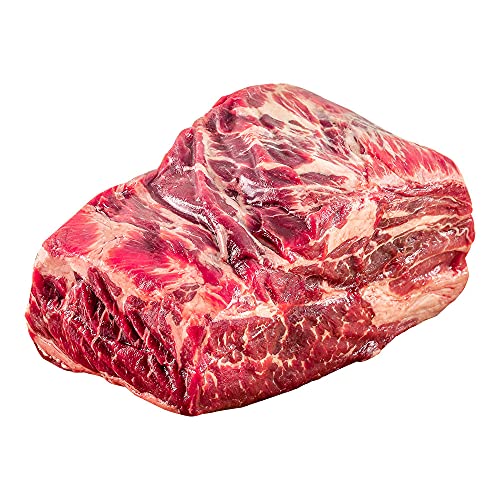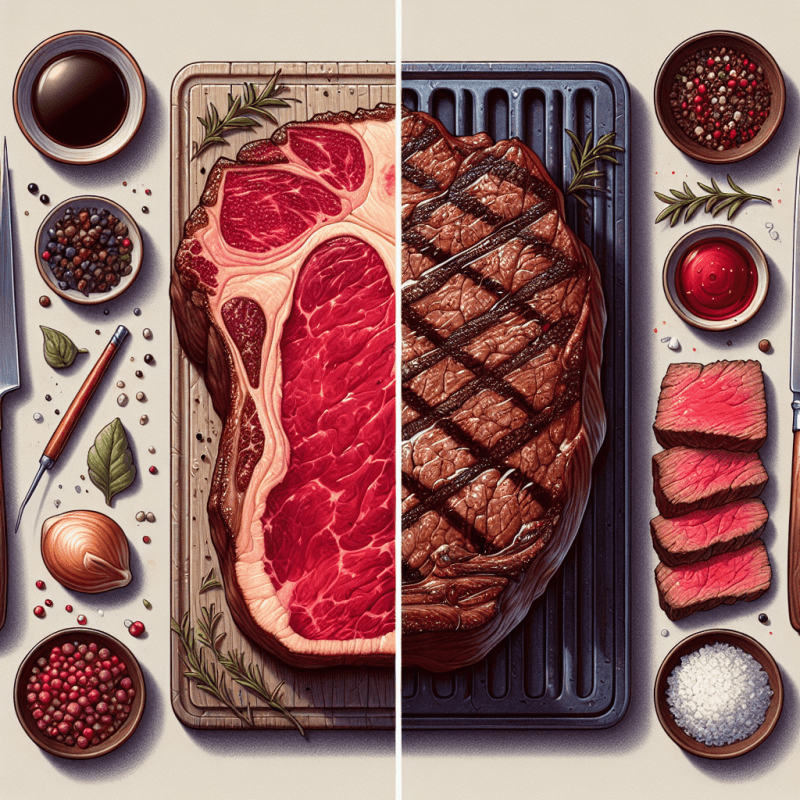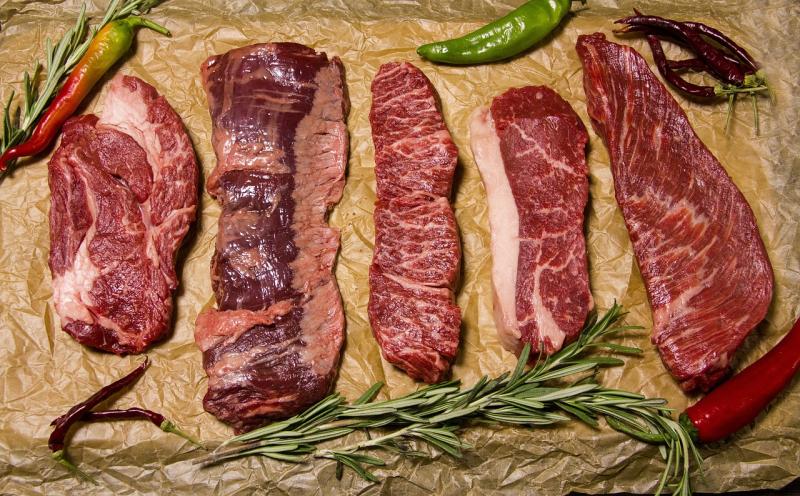When it comes to roasting meat, selecting the right cut can make all the difference in achieving a tender, flavorful result. Each cut has its own unique qualities that can enhance the roasting process, whether it's the marbling of fat for juiciness or the tenderness of the muscles. Here are some prime picks to consider for your next roast dinner.
1. Ribeye
Known for its rich marbling and intense flavor, ribeye is an excellent choice for roast enthusiasts. The high fat content ensures that the meat stays moist and tender throughout the cooking process. Additionally, the generous marbling enhances both the taste and texture, resulting in a succulent and melt-in-your-mouth experience. Consider seasoning the ribeye roast with herbs and spices to complement its robust flavor.
2. Sirloin
Sirloin roast is a lean yet flavorful cut that works wonderfully in roasting. While it may not have the same level of fat marbling as ribeye, sirloin compensates with its tenderness and beefy taste. Choose a center-cut sirloin roast for optimal results, as it tends to be the most tender. Elevate the flavor by rubbing the roast with a blend of garlic, rosemary, and black pepper before popping it in the oven.
3. Tenderloin
As the name suggests, tenderloin is renowned for its exceptional tenderness. This cut is lean, yet incredibly succulent, ideal for those seeking a melt-in-your-mouth experience. Often regarded as the most luxurious cut, tenderloin is commonly used for special occasions. To elevate its flavor, wrap the roast in bacon to add a touch of smokiness and moistness to the overall roast.
From Ribeye to Brisket: Exploring Roasting Essentials
Nebraska Star Beef Chuck Roast with Signature Seasoning
The perfect cut for a flavorful meal - Nebraska Star Beef Chuck Roast enhanced with our Signature Seasoning
Product information
$124.99
Product Review Score
4.72 out of 5 stars
85 reviewsProduct links
Ribeye, known for its juicy flavor and tender texture, is an excellent choice for roasting. This cut comes from the rib section of the beef and contains a good amount of marbling, which enhances its flavor and moisture. When roasting a ribeye, it's essential to choose a well-marbled piece of meat and season it with salt, pepper, and your favorite herbs or spices. Roasting a ribeye at a high temperature will result in a beautifully caramelized crust and a perfectly medium-rare or medium interior.
Brisket is another popular cut that can be transformed into a mouthwatering roasted dish. This cut comes from the breast or lower chest of the animal and is known for its rich, beefy flavor. When properly roasted, brisket becomes incredibly tender and succulent. To achieve the best results, it's recommended to marinate the brisket overnight to enhance the flavors. Slow roasting at a low temperature for several hours will break down the tough connective tissues and result in a melt-in-your-mouth texture.
Exploring different meat cuts ideal for roasting opens up a world of delicious possibilities in the kitchen. While ribeye and brisket are just two examples of roasting essentials, there are numerous other cuts to discover and experiment with. Each cut has its own unique characteristics, flavors, and cooking requirements, so don't be afraid to try something new. With practice and a little bit of patience, you'll be able to serve up impressive and satisfying roasted meat dishes to impress your family and friends.
Succulent Surprises: Unconventional Meat Cuts for Roasting Delights
When it comes to roasting meat, we often think of classics like beef ribeye, pork tenderloin, or a whole chicken. However, there is a world of unconventional meat cuts out there waiting to be explored. These lesser-known cuts can offer incredible flavor and tenderness when roasted to perfection, providing a delightful surprise for any meat enthusiast.
Picanha:
Originating from Brazil, picanha is a cut that comes from the top sirloin cap of a cow. It is tender, flavorful, and full of marbling, making it an ideal choice for roasting. Many chefs consider picanha as one of the best-kept secrets of the beef world, as it offers a rich taste and melts-in-your-mouth texture when cooked to medium-rare or medium.
Pork Collar Roast:
The pork collar roast, also known as the coppa or neck end, is a juicy and succulent cut of meat that is perfect for roasting. This cut comes from the area around the pig's neck and upper shoulder, and it offers a good amount of marbling and fat. When roasted, the fat renders down, basting the meat and resulting in incredibly tender and flavorsome slices.
Lamb Breast:
Often underrated and overlooked, lamb breast is an exceptionally flavorful and affordable cut that lends itself beautifully to roasting. It is a fattier cut with layers of meat and fat, making it ideal for slow and low roasting. As it cooks, the meat becomes tender and juicy while the fat caramelizes, creating a delectable combination of flavors.
Roasting Gems: Unearthing Lesser-Known Cuts of Meat
When it comes to roasting meat, most people immediately think of the classic cuts like prime rib, tenderloin, or chicken breast. However, there is a wealth of lesser-known cuts that are equally delicious and perfect for roasting, offering unique flavors and textures to enhance your culinary experience.
One such cut is the tri-tip, a triangular portion of beef from the bottom sirloin. Although it may not be as popular as other cuts, the tri-tip boasts excellent marbling and tenderness. When properly roasted, it becomes incredibly flavorful and juicy, making it a great choice for a weekend dinner or a special occasion.
Another gem worth exploring is the pork shoulder. Often associated with slow cooking methods like braising or smoking, the pork shoulder can also be roasted to perfection. Slow-roasting this cut at a lower temperature allows the fat to render while keeping the meat moist and tender. The result is a mouthwatering roast with a crispy exterior and melt-in-your-mouth interior.
Lastly, let's not overlook the lamb shoulder, an underappreciated cut that offers a rich, savory taste. Roasting the lamb shoulder on low heat for several hours allows the meat to become fork-tender, creating a delightful combination of flavors. The moist and succulent meat pairs well with various herbs and spices, providing a delectable roast that will impress your family and guests.




